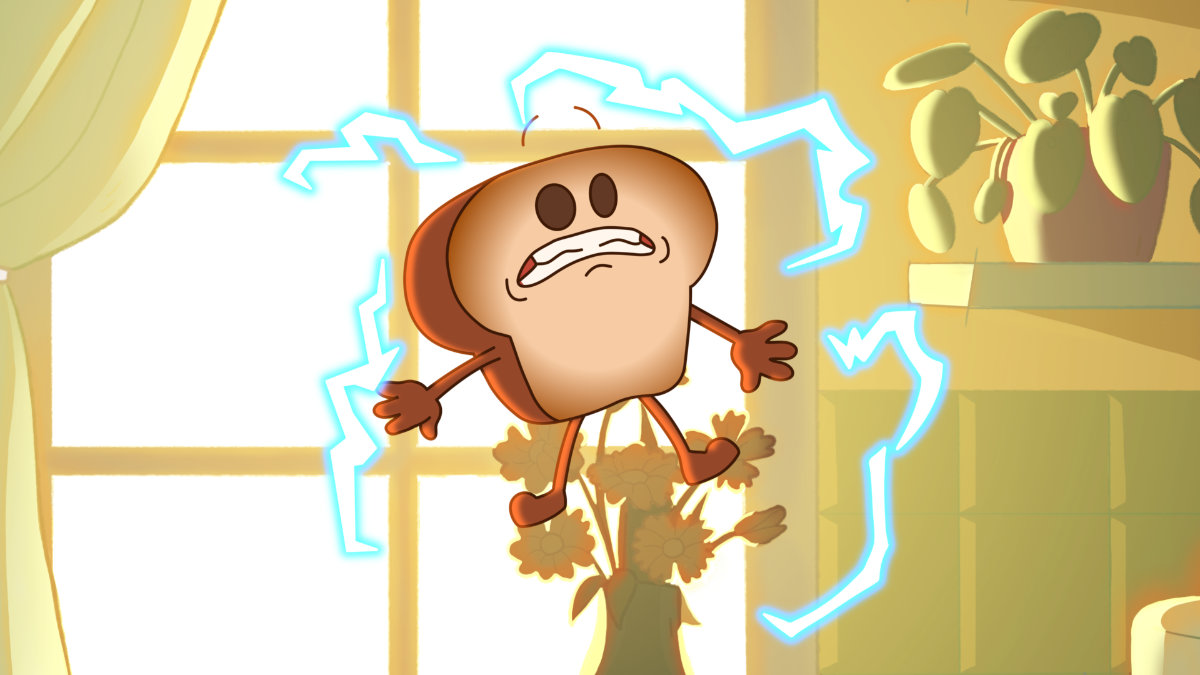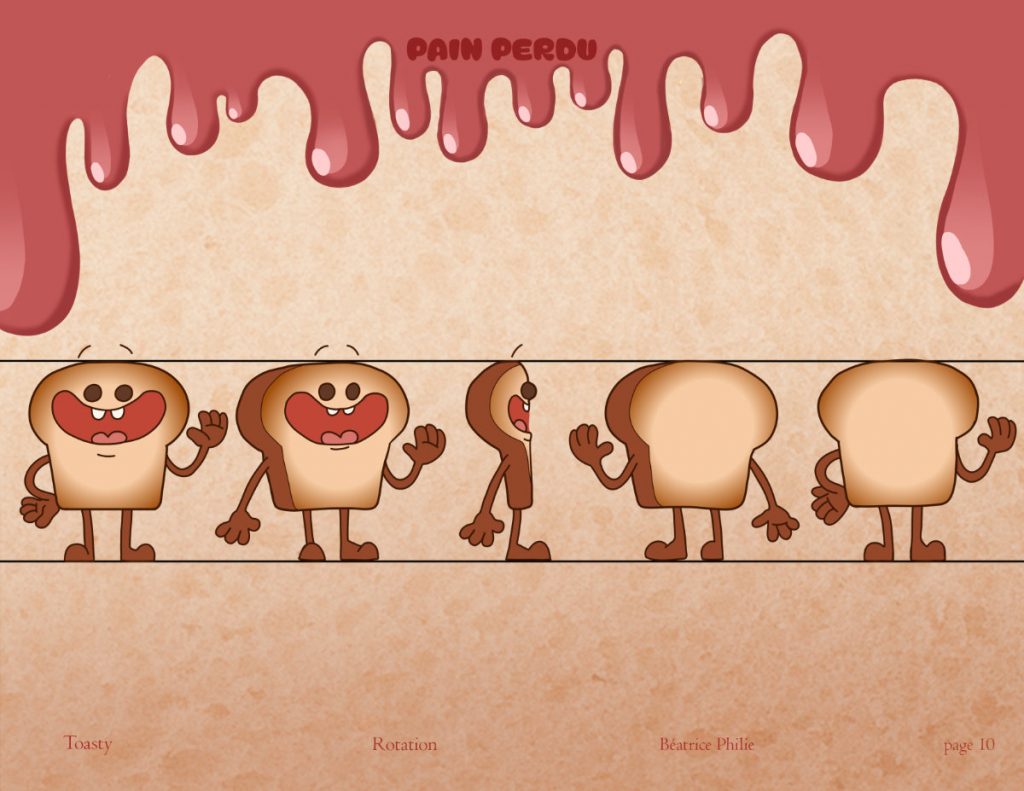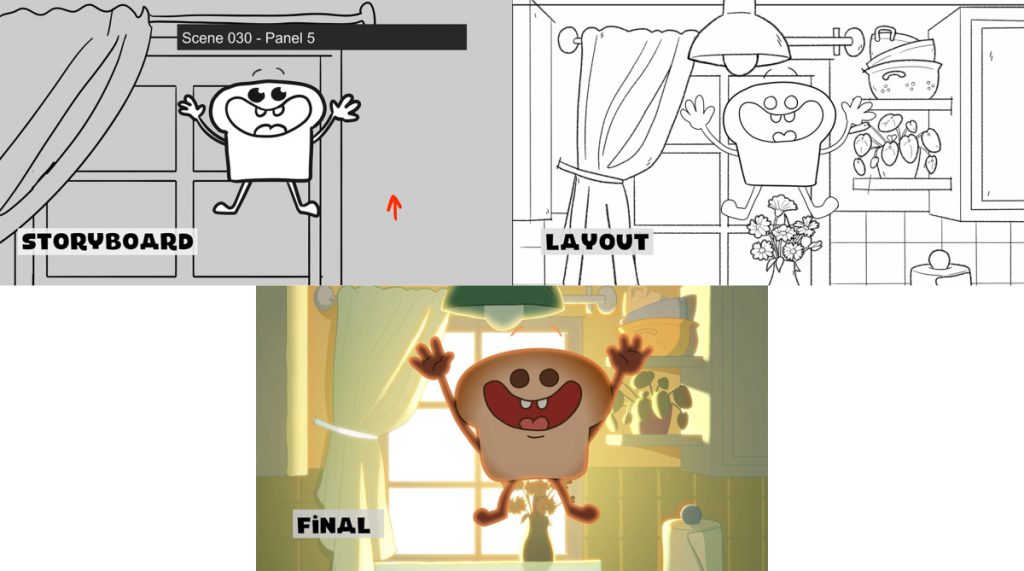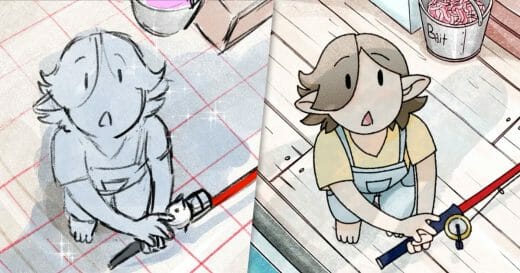
In the short film Pain Perdu, a piece of freshly toasted bread pops out of a toaster only to find that its companion slice is still stuck! From the planning and design to the animation and compositing, every aspect of Pain Perdu’s production was completed by Béatrice Philie.
Pain Perdu is Béatrice’s thesis film, the final assignment of the three year animation program at Cégep du Vieux Montréal. This animation program is one of the most accessible in Canada, and it covers every part of the animation production pipeline. Since debuting at Cégep du Vieux Montréal gala, the short film has screened at the Fantasia Film Festival as part of the Cabaret of Curiosities event.
We caught up with Béatrice to learn about her experience in the animation program, the inspiration for her film, and the process of making Pain Perdu.

How did your interest in animation begin, and what prompted you to join the animation program at Cégep du Vieux Montréal?
Béatrice: I used to watch a lot of animated movies and shows as a kid, which is how I got into drawing. When I finished high school I didn’t really know where I was going but my passion for art was still there.
I researched where I could study to help improve my skills and the animation program at Cégep du Vieux Montréal popped up. I watched all the movies the graduates had made and that really inspired me to work hard so I could study there.
What has your experience in the program been like? Could you share one of the highlights of the program?
Béatrice: I loved my experience in the animation program! I learned so many things and met so many wonderful and talented people. I think one of the highlights of my program was my teachers.
Each one of them was so passionate about what they were teaching us, they were always open to questions and eager to share their knowledge of animation with us. They taught me a lot of things about the industry and the history of animation and their dedication really made it easier for me to learn and love animating.

Pain perdu tells a fun, imaginative story with a dark twist. What inspired this story about toast?
Béatrice: When I was first thinking about what kind of story I wanted to tell, I knew I wanted to make a funny and light-hearted film. Later, I talked about my project with my father and he showed me some drawings I had made as a child of a piece of bread with a big smile. That’s when I knew I had to make my short film about a piece of bread, and so I developed the concept from there.
What were the most exciting parts of the filmmaking process for Pain perdu?
Béatrice: Pain Perdu was such a fun film to make overall but if I had to choose the most exciting parts I’d say the character design and VFX were my favorite parts. I really liked designing my characters because everytime I worked on them I had so much fun! Showing them to my friends and teachers and seeing them laugh at all the iterations I’d made of this piece of bread with eyes and legs was always a lot of fun.
I also really enjoyed making the visual effects on my movie because it really transformed a scene and helped me tell my story more adequately. I remember adding the electrocution effect in one of my scenes and it completely changed what I had before and elevated it to another level!

The shot of the burnt bread crumbling is really impressive. Could you share a bit about how you created this scene?
Béatrice: This scene was a pretty tough one to plan out and animate. At first I wasn’t sure how to make my toast crumble in a way that would make sense for the viewer. So I went and looked for references online and a Looney Tunes episode showed up.
The episode was a great inspiration for the bread crumble. Then I added the jam which I had already planned from the start. That was probably my favorite thing to animate in that scene.
What was the most challenging part of making Pain Perdu, and how did you overcome that challenge?
Béatrice: I think the most challenging parts of making this movie were the planning phase, and storyboarding. I had all these ideas of what I wanted my toast to do but, with only 30 seconds to tell a compelling story, I had to choose the best ones.
My teachers and friends helped a lot by giving me ideas on how to tie all these actions together, while still making it a story that made sense and that looked fun. I created so many different iterations of my storyboard but I think the final one is the best one.

What was your character design process for Pain perdu? Can you talk a bit about the design of the main piece of bread?
Béatrice: Toasty was such a fun character to design! I first started by finding a lot of references of the kind of style I wanted to use to design my piece of bread. And I took a lot of inspiration from retro cartoon characters because they were simple but their designs were effective in telling the stories they wanted to tell.
I made many different versions of what Toasty could look like so I could put all of my ideas down on paper. And I also tried to keep his design as simple as possible so he could be as expressive as he needed to be without being restrained by his design.
What was the helpful feature in Toon Boom Harmony while making Pain Perdu?
Béatrice: One of my favorite features was the shift and trace tool. My characters would move around a lot so having this tool helped me make sure my characters were consistent with their original design. It also really helped me work more effectively.

Do you have any advice for up and coming animators that are working on their student films?
Béatrice: My biggest advice would be to stick to your schedule and take it one step at a time. Making a short film can seem like such a big and overwhelming task at first. If you break it down to little steps, and take it one day at a time, it will make it feel way more achievable. Aside from that, I’d say the most important advice I could give is to just have fun with it!
What’s next for you in animation? Do you have upcoming goals or projects you’d like to share?
Béatrice: One of my goals is to keep myself immersed in the animation scene. I decided to volunteer at the Fantasia Film Festival, which is taking place from the 18th of July to the 4th of August in Montreal.
Additionally, my short film Pain Perdu will be presented at Fantasia on August 1st, as a part of the program called the Cabaret of Curiosities. I am also looking at my options to further my studies in animation, with the goal to achieve a higher study level in the field.
- Want to see more from Béatrice Philie? Be sure to check out her portfolio on ArtStation.
- Interested in using Toon Boom Harmony for your thesis film? Students can qualify for up to 84% off Toon Boom Animation’s software.



